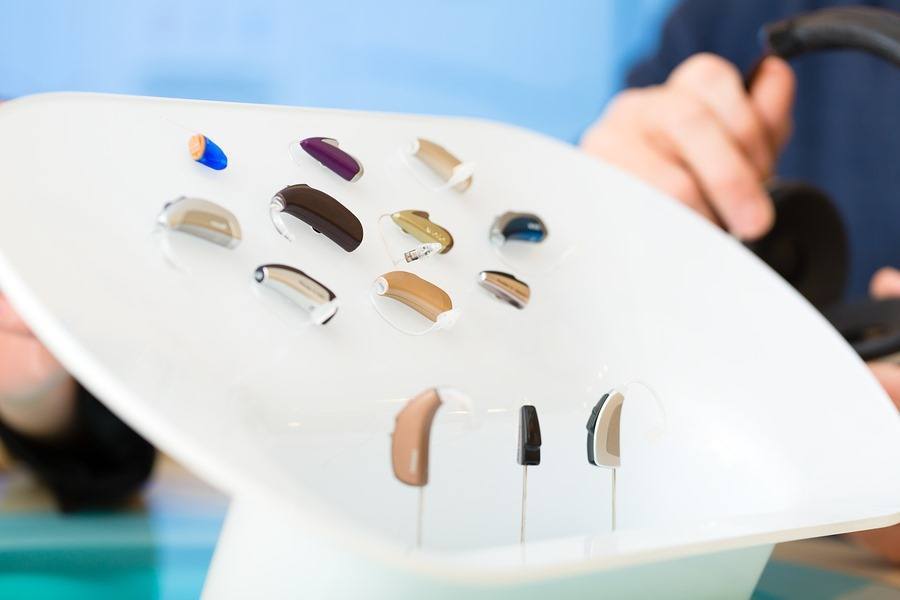Hearing aid technology has morphed light years over the last few decades. Even with a hoard of brilliant changes, today’s hearing aids are still comprised of four main parts:
- The microphone picks up sounds in your environment and shoots it through to the processor.
- The processor bolsters the sound signal and delivers it to the receiver.
- The receiver delivers this amplified sound signal through to the ear canal.
- The power source drives the entire system.
The most basic smart digital hearing aids require the user to make some type of adjustments based on the listening situations. For instance, the use may be required to turn the volume down or up, or reduce noise coming from behind the wearer by pushing a button.
Even though these basic hearing aids are still computer programmable, they have limited adjustments and may not be fine tuned for unusual patterns of hearing loss. At the same time, these devices are less automated and less customizable in comparison to hearing aids made with more advanced technology.
Features of The Most Advanced Types of Hearing Aids
The majority of the advancements to hearing aids have been within the processor. Today’s processors use cutting-edge technology and are highly programmable. This facet allows the hearing practitioner to fine-tune characteristics of the amplification and customize many other features based on your hearing preferences.
All of these modifications are made with a state-of-the-art computer systems and special software provided by the hearing aid manufacturer. With modern technology, you can practically get any hearing aid processor tucked into whatever device you desire. Continue reading to learn more about some of the top features offered on modern types of hearing aids.
Channels
Each hearing aid has a specific number of channels.The channels represent the number of sections in the hearing aid that can process the various parts of incoming sound. The more channels a hearing aid has, the more flexibility it has in programming. Hearing aids with more channels allow the prescription to be customized across various pitches and frequencies, which is called frequency response.
Digital Noise Reduction Hearing Aid Technology
Digital noise reduction systems are designed to quickly analyze sound signals to determine if the signal is polluted with unwanted noise. If this type of noise is detected, the system will automatically reduce the level. Digital noise reduction makes environmental and background noise less of an annoyance for those wearing hearing aids. This innovative feature also increases the overall level of listening comfort.
Directional Microphone Systems
Directional microphone systems intuitively work to give the sounds coming from in front of you a boost. At the same time, it reduces all other sounds coming from peripheral directions. Certain hearing aid systems can be designed to reduce the noise coming from the rear of the wearer. Directional microphone systems were created to improve speech recognition in background noise.
Feedback Management Systems
Anytime a speaker and microphone are in close proximity the chances of feedback loops exist. Feedback management systems are designed to combat this inevitable happening because it’s annoying and reduces the wearer’s comfort. Feedback management algorithms may be implemented differently for advanced hearing aids and basic hearing aids.
- More advanced feedback management systems will eliminate or reduce whistling without hampering the hearing aid’s overall amplification.
- Basic feedback management system may reduce overall amplification in the process of attempting to remove the whistling.
Impulse Noise Reduction
With the goal of improving listening comfort, impulse noise reduction works similar to digital noise reduction. The system detects all transient loud noises, such as dishes rattling, keyboard, or car key rattling. Instead of amplifying these types of sound, the impulse noise reduction soothes them out so they do not annoy or startle the hearing aid wearer.
FM Compatibility
With FM compatibility, your hearing aid will be able to wirelessly connect to FM systems. In some instances, the hearing aid may require a special attachment known as a boot. However, FM systems can be used with hearing aids or alone to bolster the signal-to-noise ratio without causing bothersome feedback. FM compatibility becomes increasingly important when choosing hearing aids for children. These systems are integral in educational settings to make sure the child is able to hear the teacher’s voice.
Telecoil
Telecoil is a wireless feature that intelligently picks up electromagnetic signals from telephones. With telecoil, the signal interest is aimed to the processor of the hearing aid without the use of a microphone. As a result, the telecoil technology is able to boost the signal- to-noise ratio while minimizing the likelihood of feedback. The telecoil types of hearing aids are extremely helpful for worship services, exhibits, tours, and public performances.
Contact North Shoring Hearing for a Free Hearing Screening
North Shoring Hearing P.C. are your experts for the latest and most progressive technology. Our audiologists and practitioners will guide you through the process, explain your options, and help you choose the best hearing aid for your needs and budget.
Don’t hesitate to contact us if you have any questions about our services, or anything hearing-related.
And be sure to request your free hearing screening by simply clicking the button below and submitting the form. We look forward to seeing you at North Shore Hearing soon!


